Varamin kilims
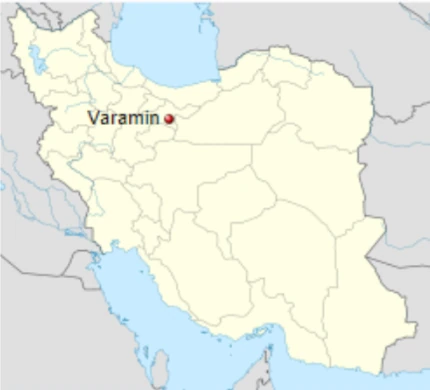
Varamin (also Romanized as Veramin) is a
Persian town, down the central Alborz
Mountain, near the capital city of Tehran.
If etymologists are right Varamin should be
considered one of the most ancient dwelling
areas in the Iranian plateau, being mentioned
as Varena several times in Zoroastrian texts.
Today it is almost attached to metropolitan
Tehran. Its surrounding Pastures used to be
frequented by semi-nomads of different
origins, mostly Turks, Kurds, tats and Gilaks,
confederated with each other as well as with
Georgians, Armenians and Arabs.
As a result, tribal flat-weaves of the area
indicate a natural multiethnic sense in
designs and structure. Such a sense could be
traced on the route from Varamin downward
to Garmsar in the Semnan Province.
Technical aspects and the structure of Varamin kilims
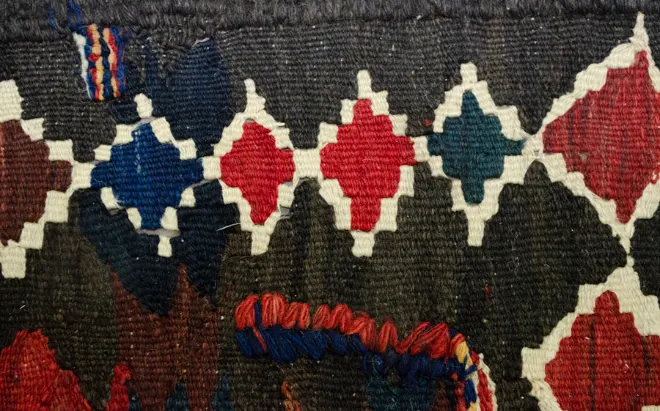
Not only kilims, but also other flat-weaves
are common in Varamin such as saddlebags
and salt bags.
The main raw material is wool for both warp
and wefts but cotton foundation is also
possible.

Slit-weave technique is common in which
wefts of different colors reverse direction on
adjacent warps. Motif could also shaped with
additional eccentric wefts in slit-woven
pieces. Motifs could also be outlined with
weft-wrapping.
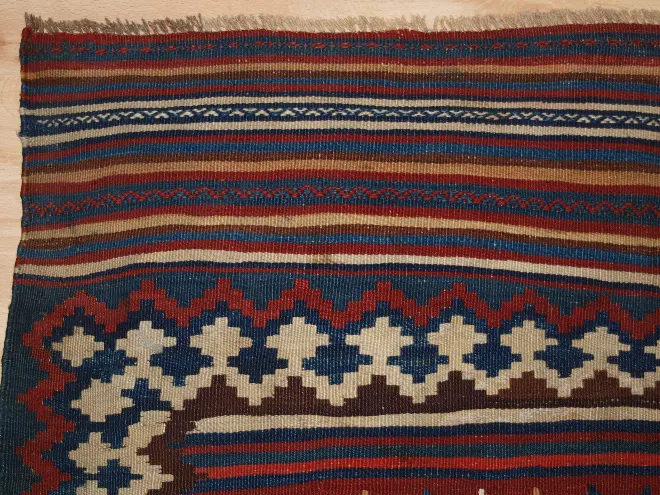
Varamin kilims are chiefly large in size
tending to standard rectangle shapes.
Dyeing and painting of Varamin kilims

Antique Varamin kilims tend to mild palettes
consisted of light olives, jade, turquoise,
camel and beige as well as moderated rosy.
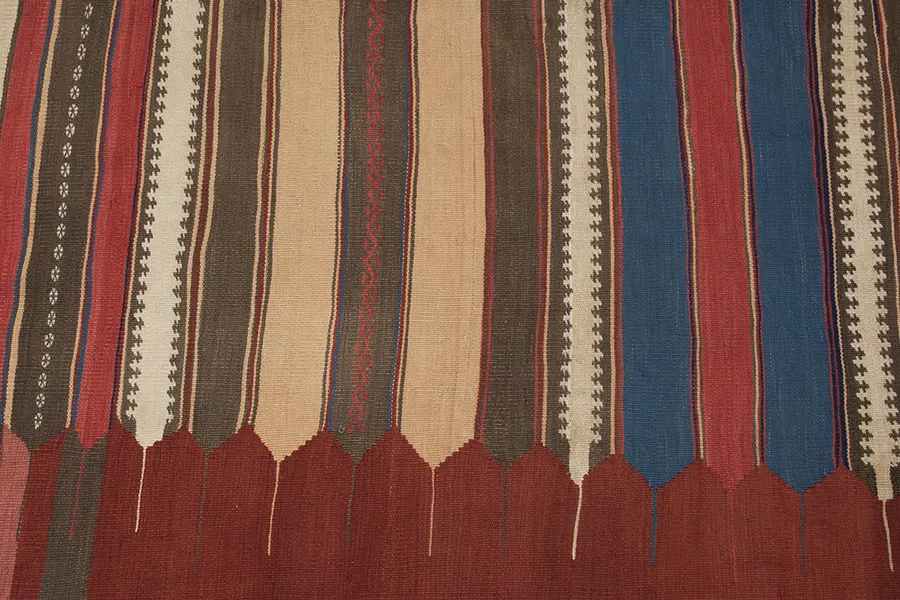
New products are more colorful, being
colored with vivid shades of red and orange
combined with contrasting colors like dark
and light blue and even black and white. In the case of repeating allover patterns,
coloring affect the total designs. In some
designs colors make illusion of bigger motifs,
maybe geometric medallions.
Designs and patterns of the Varamin kilims
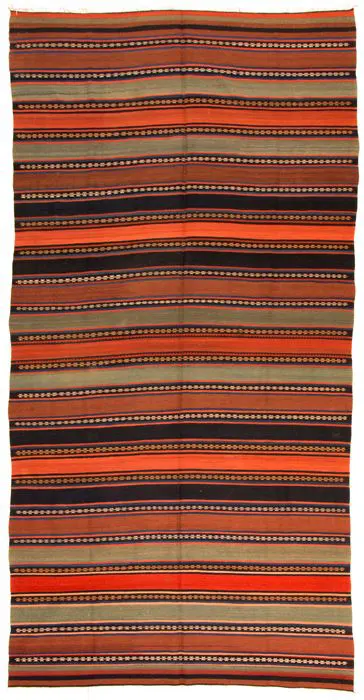
Stripped and framed structures are common
in Varamin as well as multiple medallions.
In striped pieces the strips filled with
geometric motifs or left plain. Framed piece
mostly shaped of dented lozenges which
repeat in different colors, making various
lattices.
Motifs widely known as Memling Gul have
their own interpretations here in Varamin.
These are named so after the Flemish painter
whose still lives show rugs designed with the
motif.
Short zigzag lines make another repeat.
Although simple, such motifs make a stirring
effect.
A stepped octagon with a central hexagon,
recalling Saryk Gul, used mainly for
saddlebags or other flat-woven bags. Such
motifs named after a Turkmen tribe in
Afghanistan.


